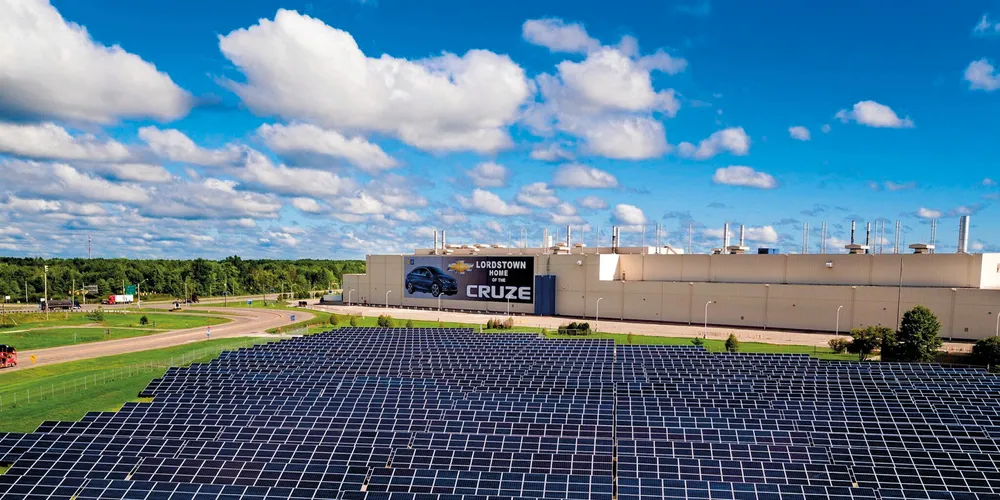Corporate America ramps solar installs to 19GW with tech and retail giants taking lead: SEIA
Facebook, Amazon, and Apple lead the way as companies increasingly install and procure power from off-site locations, with half of all capacity developed since 2020

Led by technology and retail giants, corporate America installed and procured nearly 19GW of solar PV capacity through June with sector activity set to accelerate in the next five years because of clean energy goals, falling prices, and federal tax incentives, according to a new report by Solar Energy Industries Association (SEIA).
The report, which tracks and analyses commercial solar adoption, named Facebook parent Meta as the top corporate solar user in America with 3.58GW, followed by Amazon (1.11GW), Apple (987MW), Walmart (689MW), and Microsoft (551MW).
Much of the recent growth can be attributed to rapid expansion of off-site corporate solar procurement, which now represents 55% of all commercial solar use. Almost 70% of off-site corporate solar has been brought online in the last 2.5 years.
The market for on-site solar installations has seen more modest but steady growth, averaging 3% over the last 5 years.
The legislation is expected to boost on-site solar markets by 24% through 2027 and off-site markets by 51%, according to analyst group Wood Mackenzie, which collaborates with SEIA on market research.
Extension of the investment tax credit (ITC), the main solar federal incentive, at 30% value to at least 2032 provides long-term stability for the industry, according to the report.
Flexibility to take the production tax credit (PTC) creates some additional opportunity, particularly for off-site projects. The PTC is worth $26/MWh for electricity sent to the grid over a project’s first decade of operation.
Other provisions in the law that will greatly benefit the commercial solar space are inclusion of inter-connection costs into the ITC cost basis for projects up to 5MW, and additional tax credits for siting in certain areas impacted by industrial and fossil fuel activity, and for projects located in low-income communities.
The report also noted the law will also incentivise domestic solar manufacturing, which over time should ease some of the supply chain challenges that are increasing prices and slowing deployment in the near-term.
Even so, the price of solar energy has fallen by 51% in the past decade, making it more competitive with wind and cheaper in most cases than coal, fuel oil, nuclear, and sometimes natural gas depending on locations of projects.
The emergence of large corporate renewable energy buyers has fundamentally altered the utility-scale solar space. Once reserved strictly for utilities, nearly 25% of large-scale solar projects installed in the US in 2021 featured one or more commercial buyers.
Despite immediate development hurdles such as supply chain friction and trade disputes, SEIA expects that total commercial solar installations will double against over the next three years.
“While participation in this space still requires extensive expertise and resources, developers, financiers, and utilities are increasingly shaping their offerings to meet the needs of corporate buyers,” SEIA said in the report.
(Copyright)